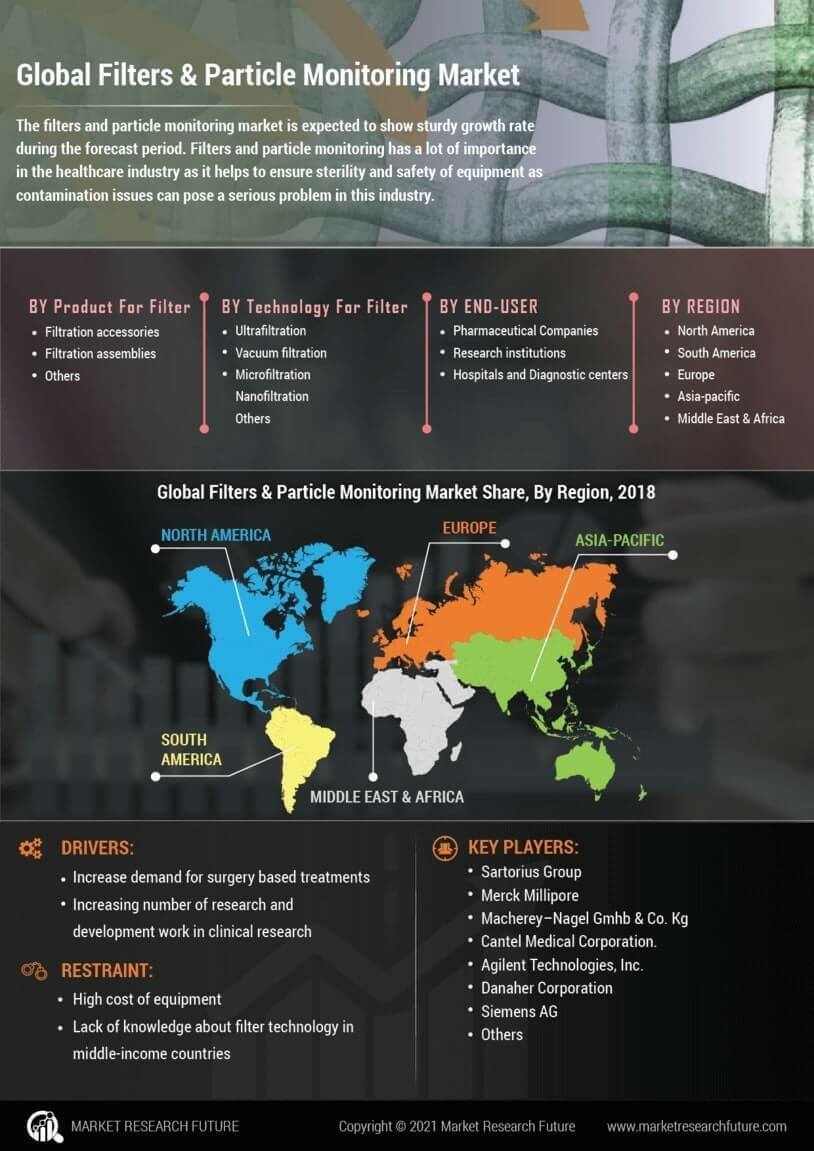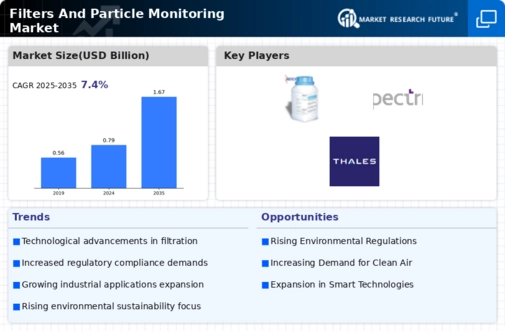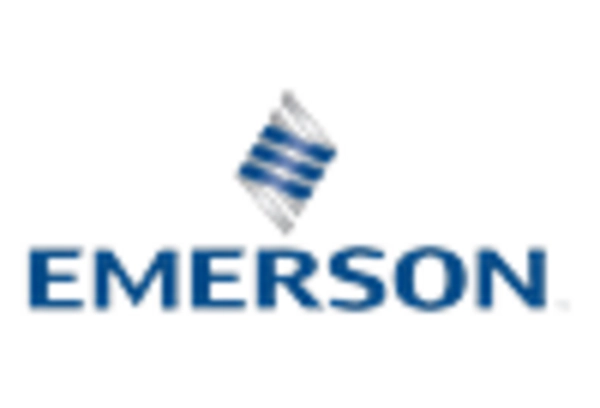Increased Focus on Health and Safety
The Filters And Particle Monitoring Market is witnessing a heightened focus on health and safety, particularly in workplaces and public spaces. Organizations are increasingly recognizing the importance of maintaining air quality and minimizing exposure to harmful particles. This awareness is driving the adoption of advanced filtration systems and monitoring technologies across various sectors, including healthcare, education, and hospitality. Market Research Future indicates that investments in health and safety measures are likely to rise, leading to a corresponding increase in demand for effective particle monitoring solutions. As businesses prioritize the well-being of employees and customers, the Filters And Particle Monitoring Market is poised for growth, reflecting this shift in focus.
Consumer Demand for Sustainable Solutions
The Filters And Particle Monitoring Market is being shaped by a growing consumer demand for sustainable and eco-friendly solutions. As environmental concerns gain prominence, consumers are increasingly seeking products that not only filter particles effectively but also minimize ecological impact. This trend is prompting manufacturers to innovate and develop filtration systems that utilize sustainable materials and energy-efficient technologies. Market data suggests that the demand for environmentally friendly filtration solutions is on the rise, with consumers willing to invest in products that align with their values. Consequently, the Filters And Particle Monitoring Market is likely to evolve, driven by this shift towards sustainability and responsible consumption.
Rising Industrialization and Urbanization
The Filters And Particle Monitoring Market is significantly impacted by the ongoing trends of industrialization and urbanization. As urban areas expand and industries proliferate, the demand for effective filtration and monitoring solutions becomes paramount to combat pollution and ensure public health. The rise in manufacturing activities, particularly in developing regions, is contributing to an increased need for efficient particle monitoring systems. Market data indicates that the industrial segment is expected to account for a substantial share of the Filters And Particle Monitoring Market, with growth rates reflecting the urgency of addressing environmental concerns. This trend suggests a robust future for filtration technologies as urban centers continue to grow.
Regulatory Pressures and Compliance Requirements
The Filters And Particle Monitoring Market is heavily influenced by stringent regulatory pressures aimed at ensuring environmental safety and public health. Governments and regulatory bodies are implementing more rigorous standards for air and water quality, necessitating the use of advanced filtration and monitoring systems. Compliance with these regulations is not only a legal obligation but also a competitive advantage for businesses. The market is witnessing an increase in demand for products that meet these compliance standards, with a notable rise in investments in filtration technologies. As regulations evolve, the Filters And Particle Monitoring Market is expected to adapt, fostering innovation and growth in response to these compliance requirements.
Technological Innovations in Particle Monitoring
The Filters And Particle Monitoring Market is experiencing a surge in technological innovations that enhance the efficiency and accuracy of particle detection. Advanced sensors and real-time monitoring systems are being integrated into filtration solutions, allowing for more precise tracking of particulate matter. This trend is driven by the increasing need for high-quality air and water filtration in various sectors, including healthcare, manufacturing, and environmental monitoring. The market for particle monitoring systems is projected to grow significantly, with estimates suggesting a compound annual growth rate of over 10% in the coming years. As industries adopt these cutting-edge technologies, the Filters And Particle Monitoring Market is likely to expand, driven by the demand for improved monitoring capabilities.


















Leave a Comment